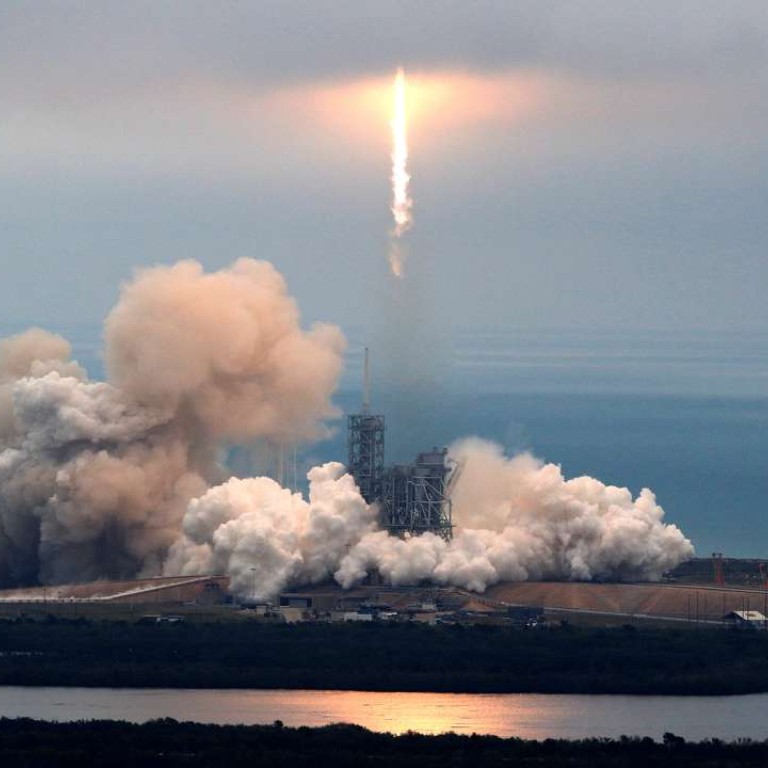
SpaceX launches supplies to space station from historic launchpad, one day after scrubbing blast-off
SpaceX launched almost 2.5 tonnes of supplies to the International Space Station on Sunday morning after scrubbing its Saturday attempt because of a potential issue with its Falcon 9 rocket.
The rocket lifted off at 9.39am EST from Kennedy Space Center in Florida. It was the space company’s first launch from Launch Complex 39A, the historic pad where the Apollo and space shuttle missions launched.
This was the first commercial launch from the pad — the last mission to lift off from 39A was the final space shuttle launch in 2011.
About eight minutes after liftoff, the first-stage rocket booster landed back on land at the company’s Landing Zone 1 at Cape Canaveral Air Force Station.

The Dragon spacecraft, which is carrying the supplies, deployed about 10 minutes after launch. It is set to arrive at the space station early Wednesday morning.
Saturday’s launch was postponed just 13 seconds before liftoff so SpaceX could look into a potential issue with the thrust vector control system on the rocket’s second stage.
Shortly after, the company tweeted that it would take a closer look at the positioning of the second-stage engine nozzle.
“99 percent likely to be fine,” Musk tweeted Saturday. “But that 1 percent chance isn’t worth rolling the dice. Better to wait a day.”
SpaceX determined that the potential issue was with one of two thrust vector control actuators, which help steer the second-stage engine nozzle through flight, Jessica Jensen, Dragon mission manager for SpaceX, said in a post-launch news conference.
The company replaced the actuator Saturday night and then ran tests on the pad before launch, she said.
This was the company’s second launch since a launch pad explosion in September destroyed a Falcon 9 rocket and a commercial communications satellite.
Sunday’s launch was SpaceX’s 10th mission to deliver supplies to the space station for NASA.
This is the beginning of what SpaceX hopes will be a busy period for Launch Complex 39A.
The pad has been configured to accommodate the first flight of the company’s highly anticipated heavy-lift rocket, Falcon Heavy, as well as the first flight of a previously launched first-stage booster, which is slated for March, Jensen said.
The company is hoping to launch from Pad 39A again in about two weeks, she said.
Meanwhile, Jensen said renovations will continue on Space Launch Complex 40 at Cape Canaveral, which was damaged during the September explosion. SpaceX has completed all of its inspections at the launch pad but still needs to do “a majority of the work there,” Jensen said.
During a Friday briefing with reporters, SpaceX President Gwynne Shotwell said Space Launch Complex 40 should be operational by the summer.

